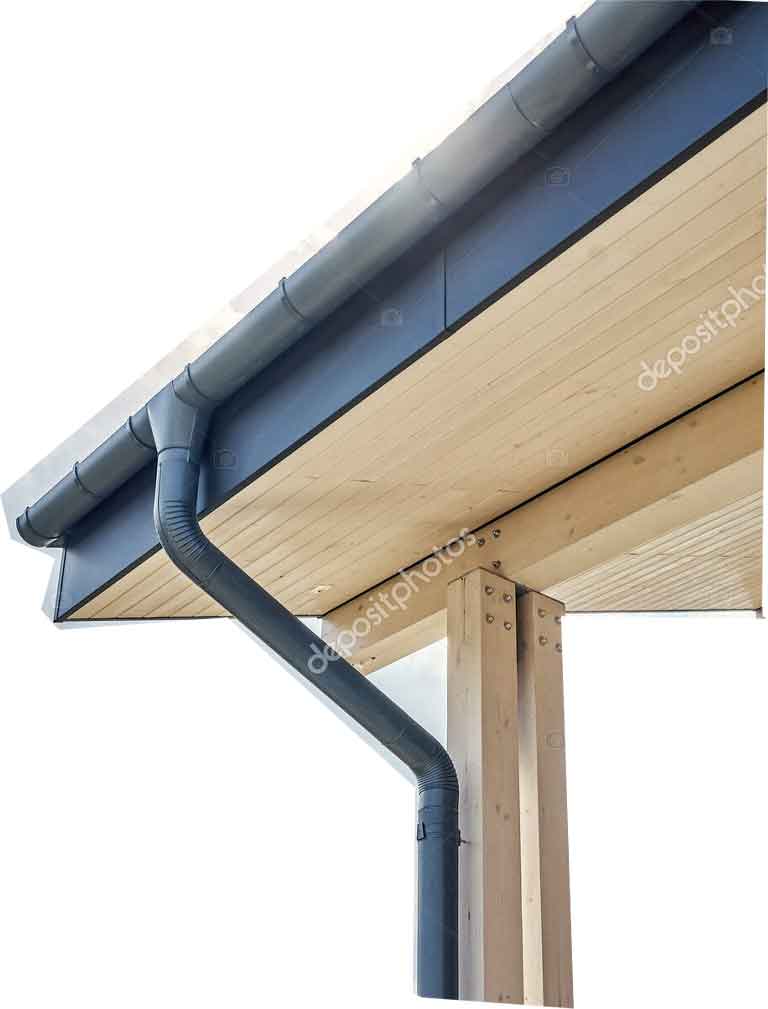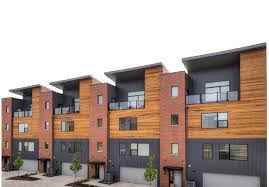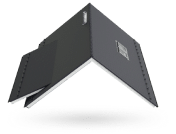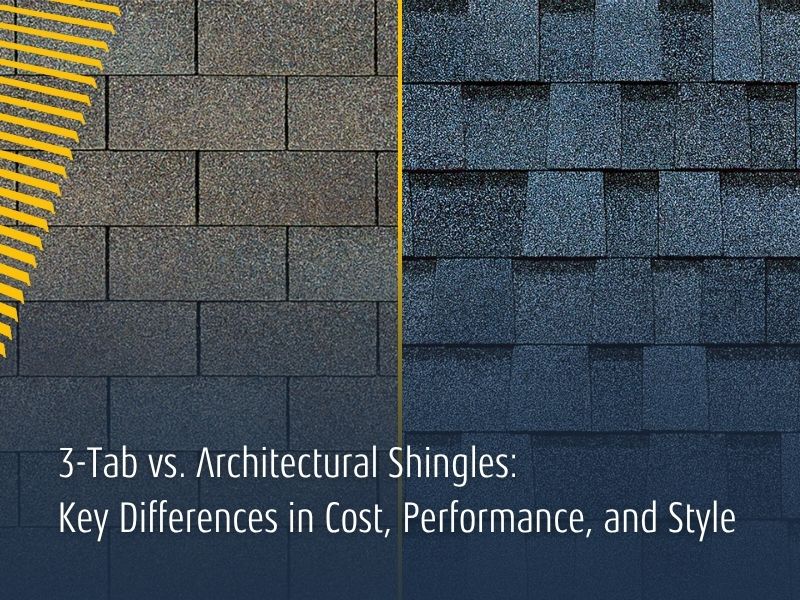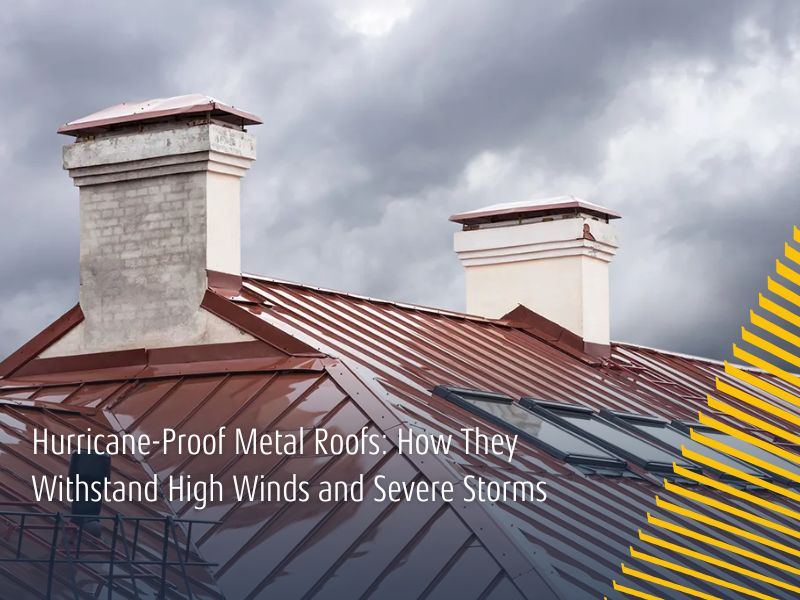When it comes to planning a roofing project, most homeowners are naturally focused on a few central concerns: selecting the right materials, staying within budget, and hiring a reputable contractor to ensure the job is done well. These are undoubtedly important considerations. However, there’s another critical piece of the puzzle that frequently gets overlooked—until it’s too late: the need for a proper inspection of the existing roof covering. building codes.
Far from being just bureaucratic red tape, building codes exist to ensure the structural integrity, safety, and long-term durability of your existing roof covering. In the context of roofing, they serve as essential guidelines that regulate how roofs shall be constructed to ensure safety and compliance. roof coverings shall be applied and how roofs must be constructed or repaired to meet regional safety and environmental standards. Ignoring or violating these codes doesn’t just put your investment at risk—it can also endanger your family, lead to failed inspections, void insurance coverage, and trigger serious legal or financial consequences.
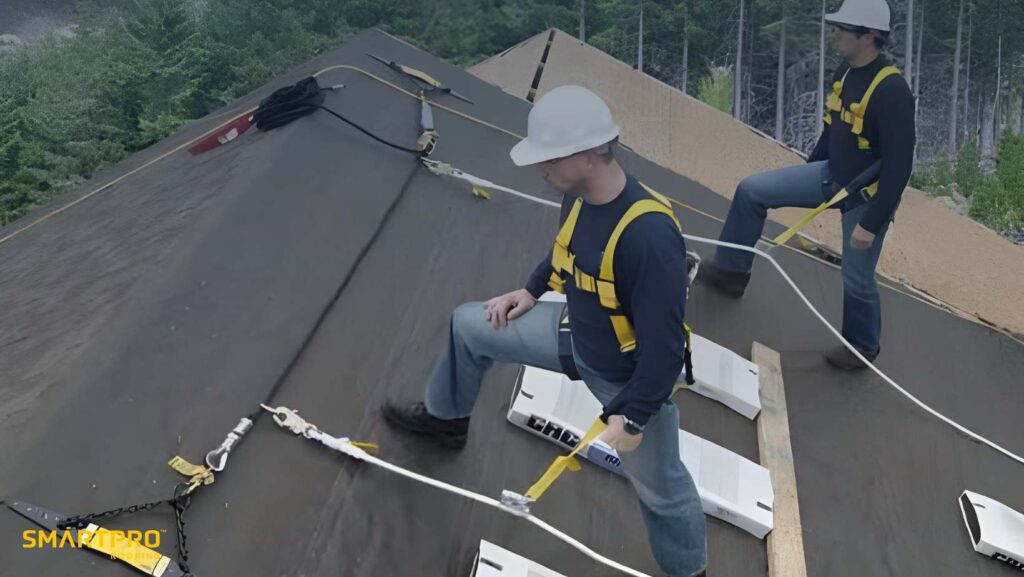
This is particularly crucial in Florida, where homes are exposed to some of the harshest weather conditions in the country. From hurricane-force winds and heavy rain to intense UV exposure, Florida roofing systems must be built to withstand extreme environmental challenges year-round. These conditions influence critical components like roof ventilation configuration and climate, underlayment types, and installation techniques. As a result, the state has adopted some of the strictest and most comprehensive roofing codes in the nation—covering everything from how roof shingles should be nailed to how metal roof panel roof coverings are installed. These requirements are continuously updated in response to new materials, construction innovations, and lessons learned from previous storms, such as Hurricane Ian or Hurricane Michael, particularly regarding how roof coverings penetrate through the roof sheathing.
Still, despite these stringent rules, roofing code violations are surprisingly common, often resulting from unlicensed or inexperienced contractors cutting corners, using substandard materials, or simply neglecting to stay up-to-date with evolving regulations. Many homeowners may not even be aware that their new roof is in violation—until a major storm hits and reveals serious deficiencies, or until they attempt to sell their home and the inspection fails. Either way, the consequences are expensive and stressful. Violations can range from issues as specific as how flashing is installed at wall and roof intersections, to the failure to use nails that properly secured to the roof sheathing or not less The installation of roof valley flashing shall not be less than the required depth for proper drainage.
Some roofing codes address very specific conditions. For example, certain types of roofing materials are not permitted—except where the roof covering has been approved and tested for specific applications. Likewise, installations involving a standing-seam metal roof require precise engineering to ensure panel spacing, anchoring systems, and thermal movement compliance. Similarly, when dealing with roof vertical surfaces, it is essential to adhere to all applicable codes regarding how roof coverings penetrate through the roof sheathing. clay or concrete roof tile, installers must account for weight distribution and fastening methods to avoid catastrophic failure under wind loads, particularly at the edges of all roof surfaces.
Even small oversights, like failing to properly seal penetrations through the roof plane Improper installation for plumbing vents or solar equipment can lead to water intrusion and interior damage, especially at the edge of the roof. This is why working with knowledgeable, experienced professionals is so important—because knowing the code isn’t just about avoiding fines; it’s about preventing future problems before they start.
At SmartPRO Roofing, we believe that no homeowner should have to deal with the fallout of preventable mistakes. That’s why we place a strong emphasis on education, transparency, and compliance in everything we do. As trusted Florida roof specialists, we ensure every roof we install or repair is 100% code-compliant, built with approved materials, and designed to endure Florida’s demanding climate conditions. Our team stays informed on all local and state regulations, so you don’t have to worry about any hidden surprises. Whether you’re replacing your roof or reviewing your current installation, we’ve got you covered—with clarity, compliance, and care.
Why Florida Roof Builiding Code Matter
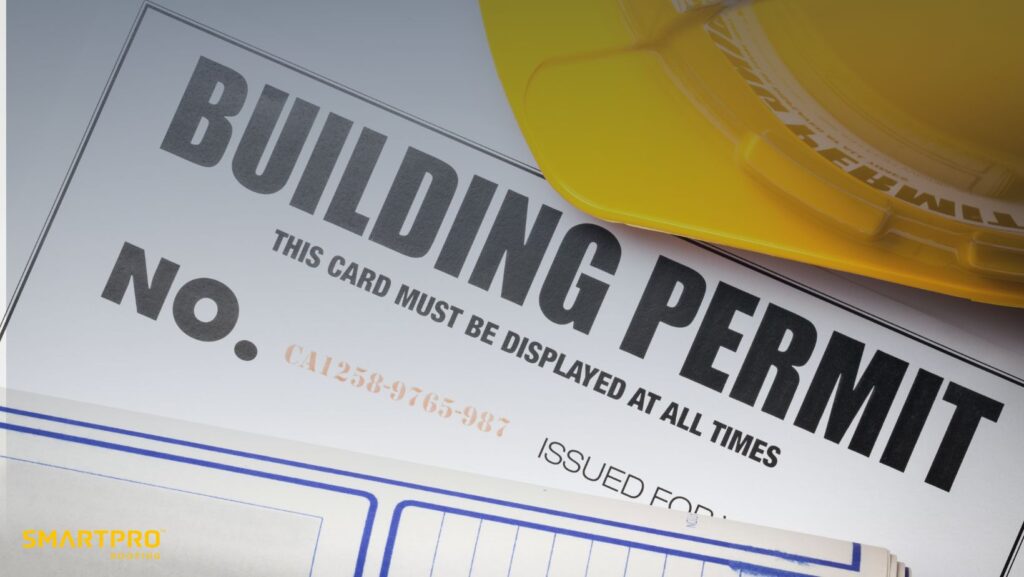
Florida building codes, particularly those related to roofing, are not arbitrary—they’re the result of decades of research, storm data analysis, and structural engineering. The Florida Building Code (FBC) is revised every three years by the Florida Building Commission and outlines detailed requirements for everything from roofing underlayment and shingle fastening patterns to wind uplift resistance and slope limitations.
This strict regulatory framework exists to protect both homeowners and communities. Improperly installed roofs don’t just threaten individual properties—they can become dangerous projectiles during high-wind events, putting surrounding homes, infrastructure, and even lives at risk. Florida’s history with powerful hurricanes has shown that weak roofing systems, such as those that do not include standing-seam metal roof panel systems, are among the most common points of failure during major storms. As such, municipalities across the state rigorously enforce compliance to minimize the potential for widespread damage.
But understanding and adhering to these regulations isn’t always straightforward. Different counties and cities may have specific amendments or requirements based on regional risks, historical data, or previous storm impacts. For instance, coastal areas such as Miami-Dade and Broward County have their own High-Velocity Hurricane Zone (HVHZ) is critical for understanding the requirements for the building. The standards for installing a new roof covering are even more stringent than the state-wide code.
Unfortunately, not all contractors are created equal. Some operate without proper licensing, insurance, or knowledge of these detailed requirements. Others may intentionally bypass permit processes or use unapproved materials in an effort to cut costs and speed up the project—leaving homeowners exposed to serious risks in the future. What might seem like a minor shortcut today can result in a total roof failure when the next Category 4 hurricane hits.
The result? Hefty fines, repair costs that aren’t covered by insurance, delays in real estate transactions, and potential structural damage that could have been avoided altogether. That’s why it’s absolutely essential to work with qualified Florida roof specialists who understand the landscape, the codes, and the stakes involved.
At SmartPRO Roofing, code compliance isn’t an afterthought—it’s a foundational part of our process. We pull all necessary permits, follow every required inspection step, and ensure your roofing system is not only beautiful and durable but also built in full alignment with local and state codes. We don’t just install roofs—we install peace of mind.
Common Roofing Code Violations in Florida
1. Improper Nailing of Shingles
One of the most common violations seen in Florida roofing is improper nailing of shingles. Florida Building Code requires shingles to be installed with a specific number of nails and at designated locations to prevent wind uplift. Incorrect nailing can void manufacturer warranties and reduce the roof’s wind resistance—an especially dangerous issue during hurricane season.
2. Inadequate Roof Ventilation
Ventilation is crucial for extending your roof’s life and protecting your home from moisture buildup, especially around the roof perimeter. Florida code specifies the amount and type of ventilation required based on attic size and roof structure. Unfortunately, many installers overlook this step, leading to mold, higher energy bills, and shortened roof lifespan.
3. Incorrect Underlayment Installation
The underlayment is a vital barrier between your roof deck and the elements, particularly when installing a new roof covering. Florida requires specific types of underlayment—like synthetic or peel-and-stick materials—especially in wind-prone areas. Not installing it properly, or skipping it altogether, is a serious violation that puts your entire roofing system at risk.
4. Failure to Obtain Permits
In Florida, nearly all roofing jobs require permits. Failing to get the proper permits or attempting to work without inspections can result in legal action, delays, and costly fines. Worse, if something goes wrong, your insurance company may deny your claim due to non-compliance.
5. Using Unapproved or Inferior Materials
The Florida Building Code mandates that all roofing materials must meet certain wind and impact resistance standards. Some contractors cut corners by using cheaper, unapproved materials that don’t meet code—jeopardizing the safety and legality of your roof.
Related Article: Florida Roofing Laws: Understanding the 25% Roof Replacement Rule
Risks of Code Violations for Homeowners
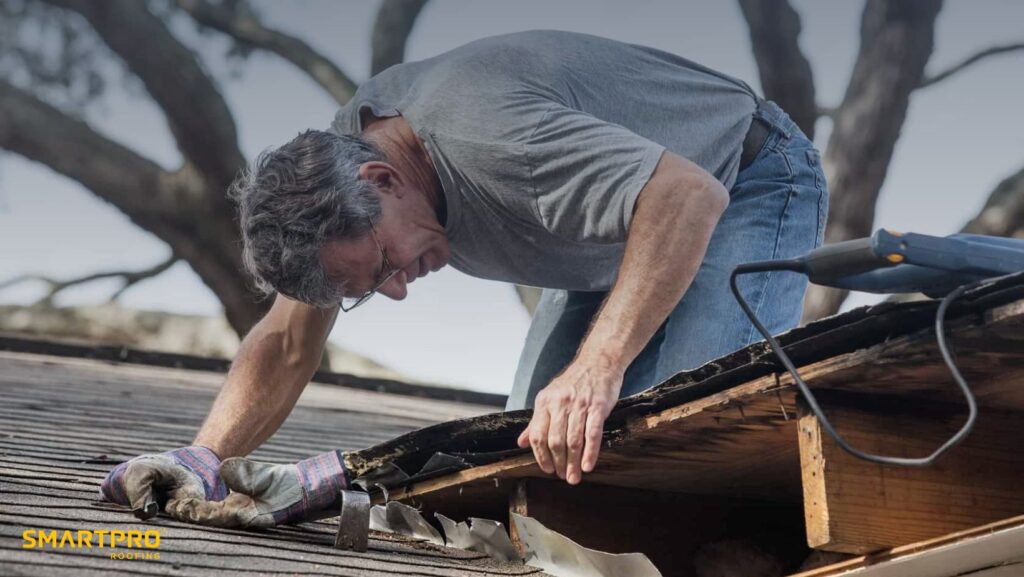
Even if the roofing mistakes aren’t directly your fault, as a homeowner, you are legally and financially responsible for ensuring that the building meet the required standards. for ensuring your property meets local and state building codes. In Florida, where climate-related threats like hurricanes, heavy rains, and high humidity are common, it is vital to ensure that roof coverings secured to the building are installed correctly. code compliance is not optional—it’s essential. Failing to adhere to proper roofing standards can have serious, long-term consequences. Below are the most significant risks homeowners face when building code violations regarding structural roof components are ignored or overlooked.
Insurance Denial
One of the most immediate and financially devastating consequences of building code violations is Ignoring building codes can lead to loss of insurance coverage for your home, especially if the roof replacement was not done according to standards.. Most homeowners’ insurance policies include provisions that require home systems, including the roof, to be installed and maintained in accordance with local codes. If your insurance company discovers that your roof was installed without a required permit, was built using non-compliant materials, or failed an inspection due to code violations, they can legally deny any future claims related to roof damage. This is especially concerning in Florida, where storms and hurricanes are a frequent occurrence and roof damage is a leading cause of insurance claims.
Additionally, even if the claim is unrelated—such as water intrusion or structural damage—insurers may still deny coverage if the roof installation itself was not up to code, particularly concerning nonsoldered seam metal roof panels. In such cases, homeowners are left to cover repairs or even a full replacement out-of-pocket.
Reduced Home Value
A roof that does not meet Florida’s strict building codes can significantly reduce your property’s market value. When it comes time to sell your home, potential buyers will likely request a full inspection—and any roofing violations discovered during that process could become deal-breakers. Buyers are often unwilling to inherit problems they’ll be required to fix immediately after purchase, and real estate agents may recommend price reductions to account for necessary repairs.
In some situations, lenders may also refuse to approve a mortgage if the property has known code violations, creating an additional barrier to closing a sale. Investing in proper installation by certified roof specialists helps protect your property value and ensures that future transactions proceed smoothly.
Legal Liabilities
Beyond financial setbacks, code violations can also expose homeowners to penalties. serious legal liabilities. If someone is injured on your property due to an improperly installed roof—such as a falling shingle, a collapse from water damage, or debris blown off during high winds—you could be held legally responsible. In some cases, this may result in a lawsuit or significant personal liability, especially if the injured party is a tenant or guest.
Even more concerning is that your homeowners’ insurance may not defend or cover you in a lawsuit stemming from a non-code-compliant roof. Courts can view the presence of code violations as negligence on the part of the property owner, even if a contractor performed the installation.
Safety Risks
Perhaps the most critical concern is the increased safety risk posed by non-compliant roof installations. Roofs that are not up to code are more likely to:
- Develop leaks due to improper sealing or flashing
- Allow moisture to enter, leading to mold and mildew growth
- Fail under high winds or heavy rain common in Florida’s climate
- Create fire hazards if improper materials are used near vents or chimneys
These issues can result in not just costly repairs but also dangerous living conditions for occupants, ensuring that the roof covering is specifically designed to withstand local weather conditions. For multi-family units, the risk is multiplied—non-code roofing systems can endanger dozens of residents at once, increasing liability and complexity. That’s why working with trusted Florida roofing experts like SmartPRO Roofing Proper installation of roofing materials is essential to ensure the integrity of structural roof components and long-term peace of mind.
How to Avoid Roofing Code Violations and How Roof Systems shall Pass Inspections
Ensuring your roof complies with state and local building codes is one of the most critical responsibilities a homeowner faces—especially in a state like Florida, where storm resilience and structural safety are paramount. Roofing code violations can lead to costly fines, denied insurance claims, and even total roof failure during extreme weather events. Thankfully, these issues are completely avoidable with the right approach, knowledge, and contractor who understands the importance of roof coverings secured to the building. Here’s how to stay compliant and avoid the most common pitfalls related to the lowest edges of all roof surfaces.
Hire Certified Florida Roof Specialists
The first and most crucial step is to partner with certified, experienced professionals who fully understand the requirements for roof systems in Florida. SmartPRO Roofing is a team of trusted roofing company in Florida who ensure all roofing work aligns with the Florida Building Code and the International Building Code (IBC) governs the standards for roof replacement and ensures safety in every building or structure.. Our team doesn’t just perform installations; we implement comprehensive code adherence strategies for every project, especially concerning modified bitumen and single-ply roofs.
Whether you’re installing metal roof panels, metal roof shingles, or composite shingles, SmartPRO uses only materials and methods that are tested, code-compliant, and engineered to withstand Florida’s harsh weather. From the mean roof height calculations to selecting Class A roof assemblies, we follow every required code to the letter, ensuring that all joints in the roof decking are properly installed.
Get a Detailed Written Estimate
Reputable roofing contractors should always provide a detailed, written estimate before any work begins, particularly when replacing the existing roof covering. This document should go far beyond just pricing—it should outline the materials to be used, labor scope, anticipated timeline, and most importantly, how the job will meet or exceed code standards.
SmartPRO’s estimates include clear breakdowns of roofing components, such as roof assemblies and roof coverings, flashing, insulation, and structural underlayments. We also define how the building or structure interacts with the roofing elements to ensure overall integrity. roof panels shall be installed and reinforced, referencing both Florida-specific building code and the broader international building code as applicable.
By including this level of detail, homeowners gain confidence that the installation will not only meet functional needs but will also adhere to legal requirements and pass all inspections.
Insist on Permits and Inspections
Another common yet dangerous roofing mistake is bypassing local permit requirements for the installation of a new roof covering. Florida law mandates that almost all roofing work—particularly replacement or structural changes—must be permitted and inspected by municipal or county building departments.
SmartPRO Roofing takes full responsibility for securing the appropriate permits on behalf of our clients. We ensure that the entire process, from initial documentation to final inspections, adheres to Florida code. We also maintain a strict adherence to roof assemblies shall and roof covering shall compliance as outlined in code sections for both low-slope and steep-slope applications.
Skilled handling of permits ensures peace of mind and prevents unnecessary project delays, legal issues, or rejection of insurance claims down the line, particularly if the roof shall not meet compliance.
Ask About Material Compliance
It’s not enough to simply have a roof that “looks” good. To truly meet code and perform well, every element—from the surface shingles or metal roof panels to the underlayment and fasteners—must be compliant with the International Building Code, Florida Building Code, and local ordinances.
SmartPRO uses only manufacturer-certified, hurricane-rated materials that meet Florida’s stringent standards. For example:
- Metal roof panels and metal roof shingles shall meet impact and uplift resistance ratings.
- Class A roof assemblies include systems that offer the highest level of fire resistance, which is often mandatory for multi-family and commercial applications.
- Products are selected specifically for Florida’s climate zone and wind exposure categories.
We ensure the entire roof assemblies and roof coverings are tested and approved under the Florida Product Approval System and Miami-Dade NOA (Notice of Acceptance), when applicable.
Ensure Proper Detailing and Wall and Roof Intersections
Many code violations occur at vulnerable transition points, particularly wall and roof intersections, roof valleys, and eave edges. These areas are often where water intrusion and uplift forces exert the greatest pressure during storms.
SmartPRO ensures every critical junction is properly detailed using code-compliant flashing systems, sealants, and water barriers. For instance, we install step flashing and kick-out diverters in accordance with Section R903 of the code to direct water safely into the gutters—an often-missed detail that causes long-term damage.
Additionally, we reinforce intersections with water-resistant membranes and extra fasteners where wind speeds are known to be highest, as determined by mean roof height and roof slope analysis.
Don’t Overlook the Roofing System as a Whole
A common roofing mistake is focusing only on visible roof coverings without considering how the entire roof assemblies shall work together. Roofs in Florida must be viewed as integrated systems. This includes not just the shingles or tiles, but also the decking, vapor barriers, ventilation, insulation, and water drainage paths.
SmartPRO’s approach involves a holistic assessment of your roofing needs and ensures that assemblies and roof coverings are not just code-compliant but optimized for energy efficiency, structural integrity, and long-term durability.
We follow a systems-based methodology aligned with Section 1507 of the building or structure in accordance with the latest codes. International Building Code, which mandates how roof panels shall be installed, fastened, and sealed to minimize risk of failure under wind uplift pressures.
Why SmartPRO Roofing is Your Best Defense Against Violations
Choosing SmartPRO Roofing means choosing compliance, safety, and peace of mind, especially with roof slopes of two units or more. Our company isn’t just another roofing contractor, our roofing experts know the codes inside and out.
With us, you’ll receive:
- Fully licensed and insured roofing services
- Florida code-compliant installations
- Permit acquisition and inspection management
- Premium, wind-rated materials
- Transparent estimates and timelines
- A commitment to your satisfaction and your home’s safety
Conclusion
When it comes to roofing in Florida, cutting corners can be costly—and dangerous. Building code violations are more than just technicalities; they can lead to insurance problems, legal issues, safety risks, and massive expenses down the road. That’s why working with seasoned professionals like SmartPRO Roofing is critical to protecting your investment and your family.
Whether you’re planning a new roof installation, a repair, or a full replacement, we ensure your project is done right—the first time.
📞 Protect your home and stay code-compliant—contact SmartPRO Roofing Contact us today for a trusted inspection or quote that includes an evaluation of roof slopes of two units or more.



